Get ready to step into the wonderful world of Jasmine plants, a place where beauty intersects with fragrance. Jasmine is more than just a plant; it is an emotion for many people, a symbol of love, and a cultural symbol. It is used in many festivals as well as to treat a variety of illnesses.
In this article, we will go over all the botanical information, including the varieties and benefits of this incredible creation of nature.
Amazing Benefits of Jasmine Flowers
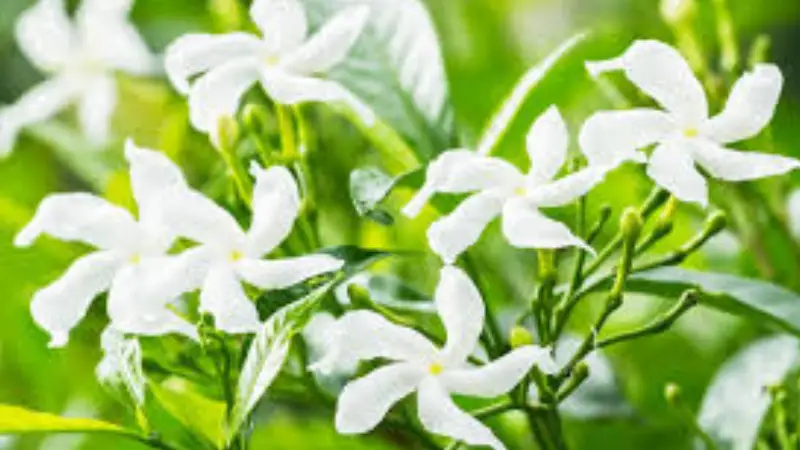
In gardens and human culture, the Jasmine family, scientifically known as the Oleaceae, is a fascinating and diverse group of flowering plants. Many well-known species, such as olive, lilac, and Jasmine, are members of this botanical family, and they all have special qualities and roles in both human life and ecosystems.
The woody shrubs, trees, or vines that belong to the Jasmine plant family have opposite leaves and clusters of tiny, fragrant flowers. Certain species display yellow and sometimes pink tones, these flowers usually have four or five petals and are white or light in color.
The potent and delightful scent of Jasmine family flowers, which differ in strength and composition amongst species, is one of their most defining characteristics.
Know the Flower!
Nearly 200 species make up the genus Jasminum, which includes more exotic species like the Winter Jasmine (Jasminum nudiflorum) and the common Jasmine plant (Jasminum officinale).
Types of Jasmine Flowers Around the World
Flowers play an important role in several religious traditions throughout India, as it is a culturally rich country. Jasmine can be found in numerous varieties throughout India; however, to avoid confusion, we have only covered the major varieties of the list below.
Let’s take a look at them.
Pink Jasmine
Pink flowers are popular amongst all. They look charming and make them the ideal choice for your garden. Its outermost shell becomes entirely covered in pink. From the middle, they appear white, giving the appearance of a snowflake.
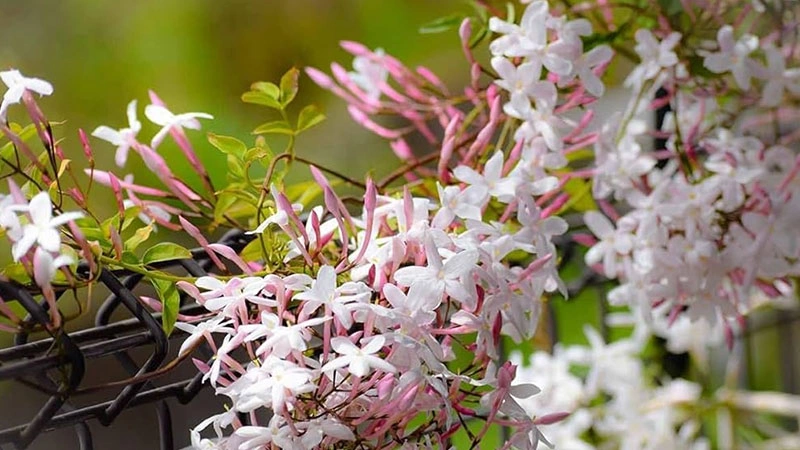
You’ll be shocked to know that these plants have the potential to grow as climbers, which is probably why they are used near the railing by people. However, these plants may not require direct sunlight for an extended period; they could be placed in a partially exposed area or under a shed. You may need to use specific fertilizers to grow them on a large scale.
Night Blooming Jasmine
Night-blooming Jasmine is a beautiful Jasmine plant that thrives in warm climates. Its night-opening flowers release a lovely fragrance. These flowers are small and attract insects, such as moths. Because of Jasmine’s wonderful scent and the way it makes the garden look even more beautiful, especially in the evening, many people love to plant it in their gardens.
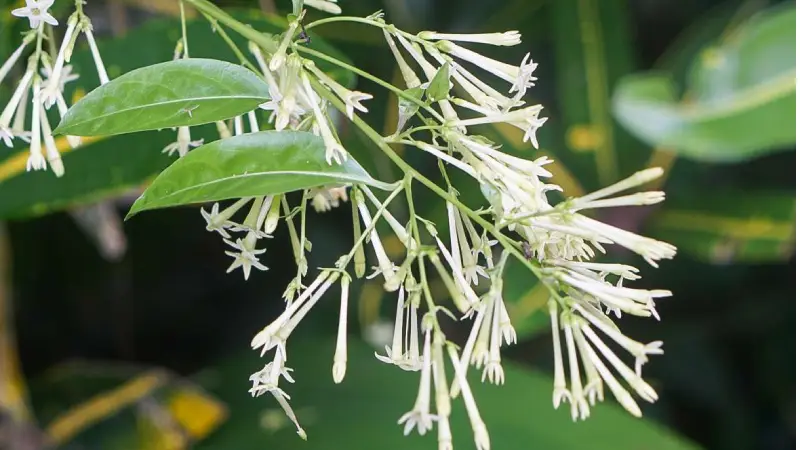
This variety is highly recommended for individuals seeking to create a quaint and fragrant outdoor area for unwinding and taking in the scenery. Here’s a fun fact for you: this plant is known as ‘Raat Ki Rani’ in India.
Juhi
Jasminum auriculatum, popularly known as Juhi, is a famous variety of Jasmine. It is undeniably one of India’s most well-known Jasmine species. You will be surprised to learn how little maintenance is required for this particular variety.
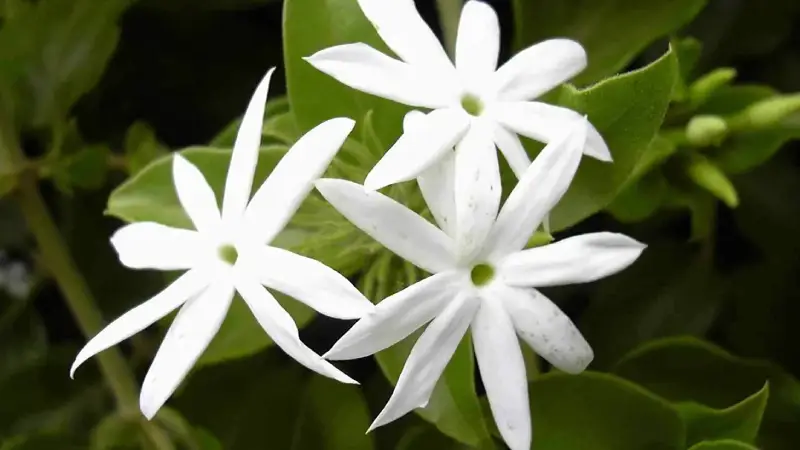
Aside from its low maintenance requirements, this variety can be grown in both arid and humid areas across the country. They are attractively scented and have white blossoms. These plants are most visible during the summer months.
Chameli
In India, the variety of Jasmine known as Chameli is very popular. Chameli flower plants can be found throughout India’s gardens. It has tremendous cultural significance because this flower is sometimes used in religious activities.
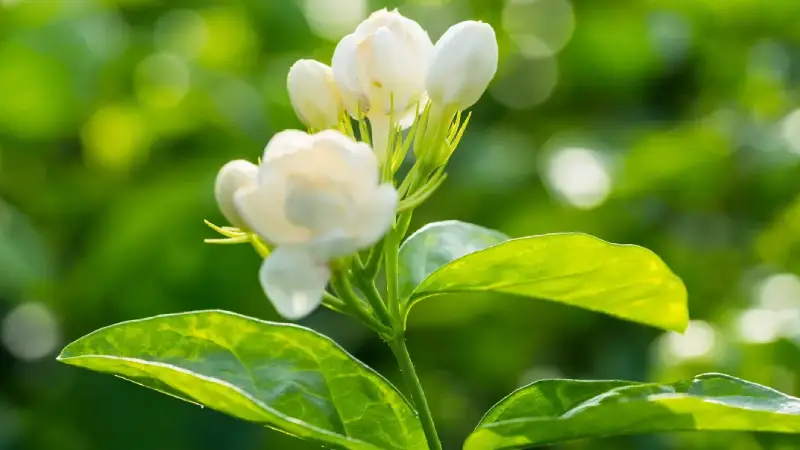
Furthermore, this plant is used to make a variety of medicines and is beneficial to the perfume industry. In certain parts of India, it is regarded as a symbol of beauty.
Arabian Jasmine
Have you heard about Mogra? It is nothing more than an Arabian Jasmine plant. This plant can be very obstinate and will spread if not given proper care and allowed to flourish. Arabian Jasmine can be found in harsh environments all over the Indian subcontinent.
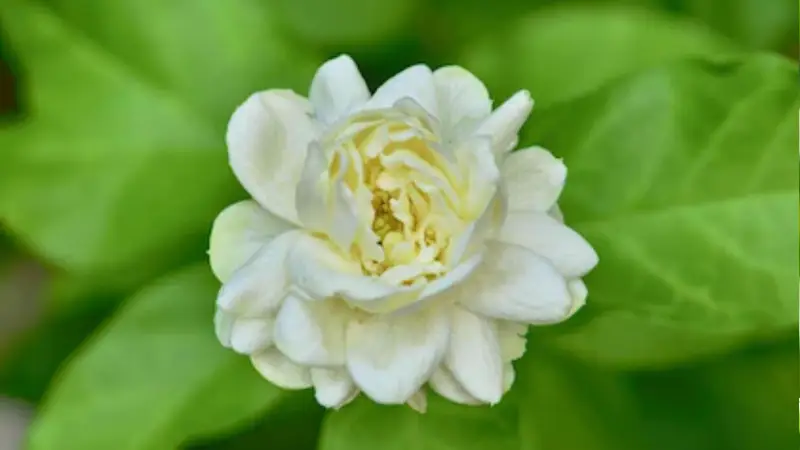
Aside from the name, it may be difficult for an inexperienced person to tell the difference between Arabian Jasmine and Indian Jasmine, but several biological characteristics differentiate the two.
Downy Jasmine
Were you aware that Kunda (Downy Jasmine) white Jasmine plant flowers are associated with Maa Saraswati’s color? Yes, exactly! Owing to its association with the Goddess Saraswati, who is venerated as the goddess of knowledge, music, the arts, and wisdom, this plant is particularly dear to gardeners throughout the nation.
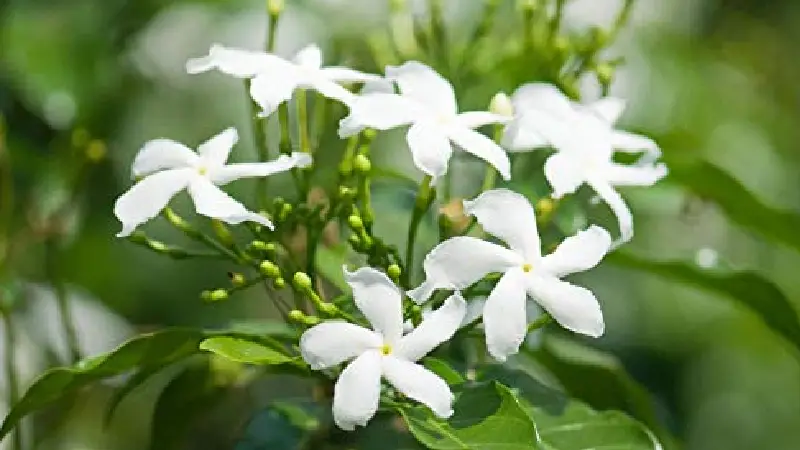
The dark green foliage of the kunda plant creates a striking contrast with its star-shaped white blooms. The plant is commonly known as star Jasmine due to its flowers, which resemble tiny stars. Although they are visually pleasing additions to any garden or house, it is important to note that, in contrast to certain other Jasmine varieties, they do not release a scent.
Kagda
This variety alone is capable of representing the entire Jasmine family. In the summer, it is usually floury, but sometimes it can be yellow. The Kagda flowers are a great choice for gardeners.
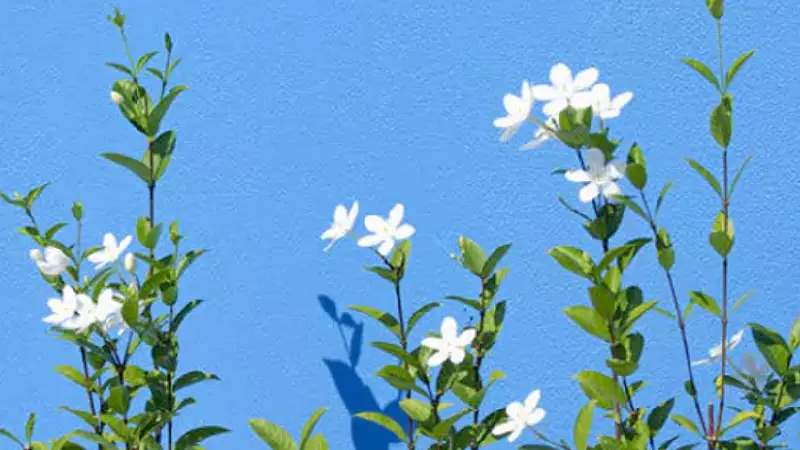
They typically grow in groups that remain stable throughout the year. This variant, like the others in the family, is well-known for its captivating aroma.
Showy Jasmine
These types of jasmine flowers are typically yellow. Like other varieties of jasmine, they require plenty of sunlight to thrive. They can grow up to 4 feet, which is a large size for a plant.
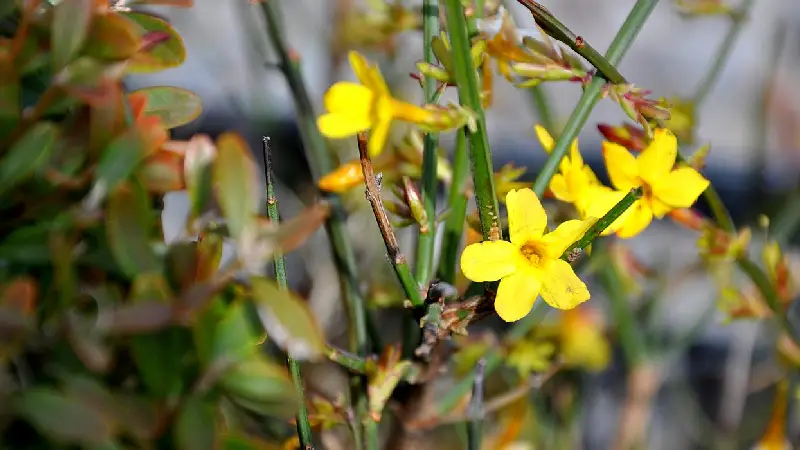
They are typically found in hot climates, but can also grow on mountains. In many countries, its yellow color represents the arrival of summer.
Purple Jasmine
The multi-flowered jasmine, or purple jasmine, is a stunning Chinese plant. Its blooms are multicolored. When the buds open, they turn white after being purplish pink at first.
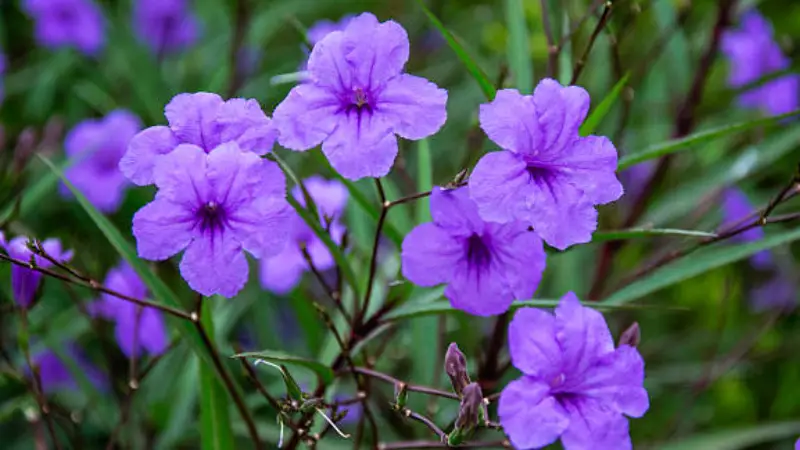
The plant is tough and maintains its leaves throughout the year. It grows quickly and is commonly used as a houseplant in the United States and Europe.
Winter Jasmine
Winter jasmine is a plant that grows into bushes that are approximately 4 feet wide and 7 feet tall. Winter jasmine has vivid yellow flowers, in contrast to other jasmine plants that typically have white flowers.
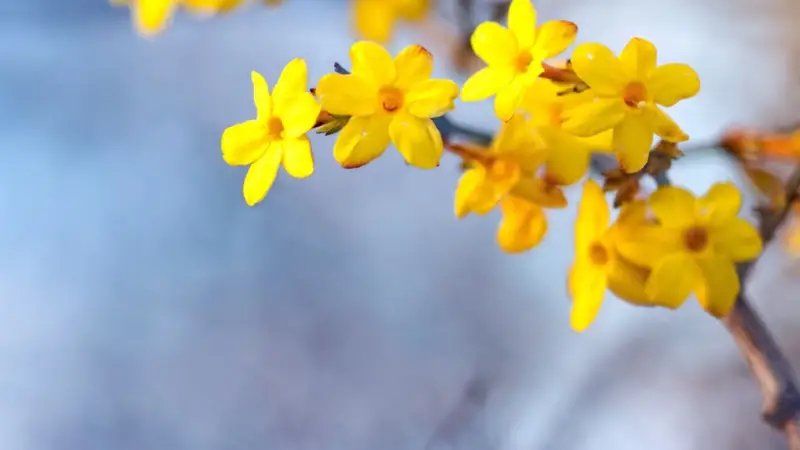
They are well-liked because they bloom in late winter when few other plants do. Winter jasmine is ideal for growing along walls, on trellises, and to prevent soil erosion on slopes.
Comparison of Different Jasmine Varieties
Now that you have learned about the various varieties of Jasmine, you are probably wondering what the main difference is. They may look the same, but they are not when it comes to biological differences. Let us compare the different varieties of Jasmine to see which one will work best in your garden.
| Varieties | Scientific Name | Flower Color | Fragrance | Blooming Time |
| Mogra | Jasminum sambac | White | Strong, sweet | Spring to summer |
| Kunda | Jasminum multiflorum | White | No fragrance | Spring to summer |
| Night Blooming Jasmine | Cestrum nocturnum | White to greenish | Strong, sweet | Nighttime |
| Juhi | Jasminum auriculatum | White | Intensely sweet | Spring to summer |
| Pink Jasmine | Jasminum polyanthum | Pink | Strong, sweet | Spring |
| Chameli | Jasminum grandiflorum | White | Strong, sweet | Spring to summer |
| Arabian Jasmine | Jasminum sambac | White | Intensely sweet | Spring to summer |
We hope the above table helps you choose the best Jasmine variety for your garden.
The Secret Behind Jasmine’s Fragrance
Jasmine is truly nature’s gift to humanity. Jasmine plants are grown in more than 90 countries worldwide, including India, China, Egypt, and Morocco. Jasmine contains hundreds of volatile aromatic compounds, which are responsible for its distinct and alluring fragrance.
Inhaling the scent of Jasmine flowers can induce a different state of mind. For example, some Moroccans believe that simply inhaling the fragrance of Jasmine flowers can help you develop immunity to a variety of diseases. It may sound strange, but it is what they believe.
Jasmine has been scientifically proven to provide several medicinal benefits. Additionally, it is used in the production of perfume all over the world solely for its fragrance.
Amazing Benefits of Jasmine Flowers
Plants can be useful in a variety of ways. Let us take a look at the practical applications and benefits of jasmine flowers.
- Digestive Aid: Jasmine can be used as a digestive aid. You may be surprised to learn that these small floral gifts can be used to treat bloating and other digestive issues. Jasmine tea is widely used to treat digestive problems.

- Improves Respiratory Health: Jasmine fragrance can help you develop immunity against several respiratory diseases. Inhaling Jasmine-scented air can help you clean your respiratory tract, significantly improving your respiratory health.

- Antioxidant: This amazing flower can also work as an antioxidant. This means it can help you look younger again. Yes, you heard that correctly, and it is used by many cosmetic companies solely for its antioxidant properties. Its antioxidant properties help to remove severely damaged skin.
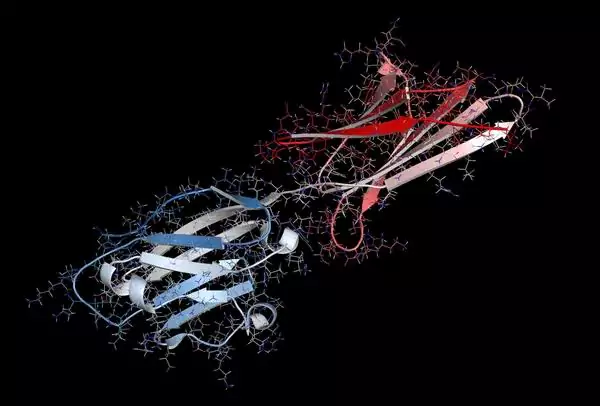
- Provides Menstrual Relief: Jasmine plant can also be used during periods to get relief. This flower can help relieve menstrual cramps and discomfort. Because of its antimicrobial properties, it can be used to prevent infection and build immunity to future infections.

- Aromatherapy: Jasmine oil is known for its mesmerizing smell and is used by millions of people to refresh their mood and avoid anxiety. As such, it finds application in diverse therapeutic contexts; among these, aromatherapy is the most widely utilized modality for Jasmine.
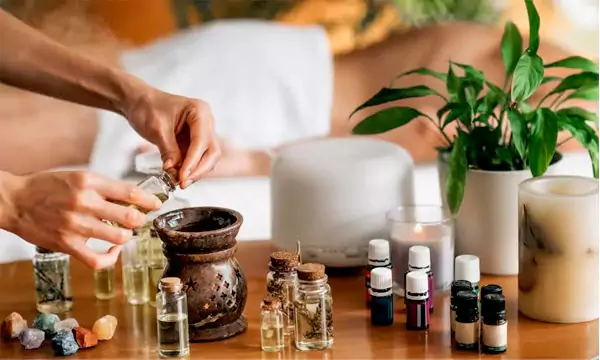
- Hair Care: Jasmine oil benefits hair by nourishing the scalp, strengthening hair follicles, and adding shine to the strands.

So these are some of the amazing benefits of the Jasmine plant; however, we recommend that you use Jasmine-containing products only with a doctor’s prescription. Consuming any type of medicine or Jasmine in large amounts without a doctor’s recommendation is harmful to your health.
Things to Keep in Mind When Growing Jasmine Flowers
Gardeners may face several challenges when trying to grow Jasmine plants. Here are some common challenges associated with cultivating Jasmine:
- Pests and Diseases: Aphids, spider mites, and whiteflies are among the pests that Jasmine plants are vulnerable to, which can weaken the plant and hinder its growth.
Furthermore, fungal diseases such as leaf spot and powdery mildew can also be problematic, especially in humid environments.
- Temperature Sensitivity: Just like humans, this little floral treasure is not safe from the sun, which is why most gardeners protect these flowers from sunlight by using sheds. However, it is not recommended to completely avoid sunlight; providing them with an adequate amount of sunlight during the morning hours should suffice.
- Overwatering or underwatering: Finding the right balance of watering can be challenging. Overwatering can result in root rot and other problems with water while underwatering can stress Jasmine plants and cause them to wilt.
Jasmine cultivation is no joke; it takes strict labor, unwavering devotion, and, above all, a lot of heart. The indoor environment of the space where the Jasmine plant is located also matters greatly. Fertilizers can be used periodically to help maintain a healthy environment for the plant and to achieve better results.
To Summarize
We sincerely hope that after reading this article, you will be able to identify the best Jasmine plant for your garden using the differentiation table provided above. However, you can also use Jasmine to cure anything.
In general, Jasmine plants are popular choices for gardens, landscapes, and indoor settings because of their beauty, fragrance, and cultural importance. For more information, please refer to the Jasmine benefit list. But take caution when choosing Jasmine for any purpose, taking into account the cost of upkeep and the necessities for productive Jasmine cultivation.
Giving you best wishes for your gardening journey!
Is the Chameli flower a type of Jasmine flower?
Yes! The Chameli plant is an important member of the Jasmine family, and it can be easily seen throughout the country.
What are some Jasmine flower benefits?
Jasmine has antioxidant properties. Furthermore, it can be used as a digestive aid to treat digestive and respiratory issues.
Can I keep red Chameli flowers inside the house with my pet?
Be careful if you own a pet. Household pets are typically allergic to flowers. These flowers might turn out to be a deathbed for your pets, especially cats.





